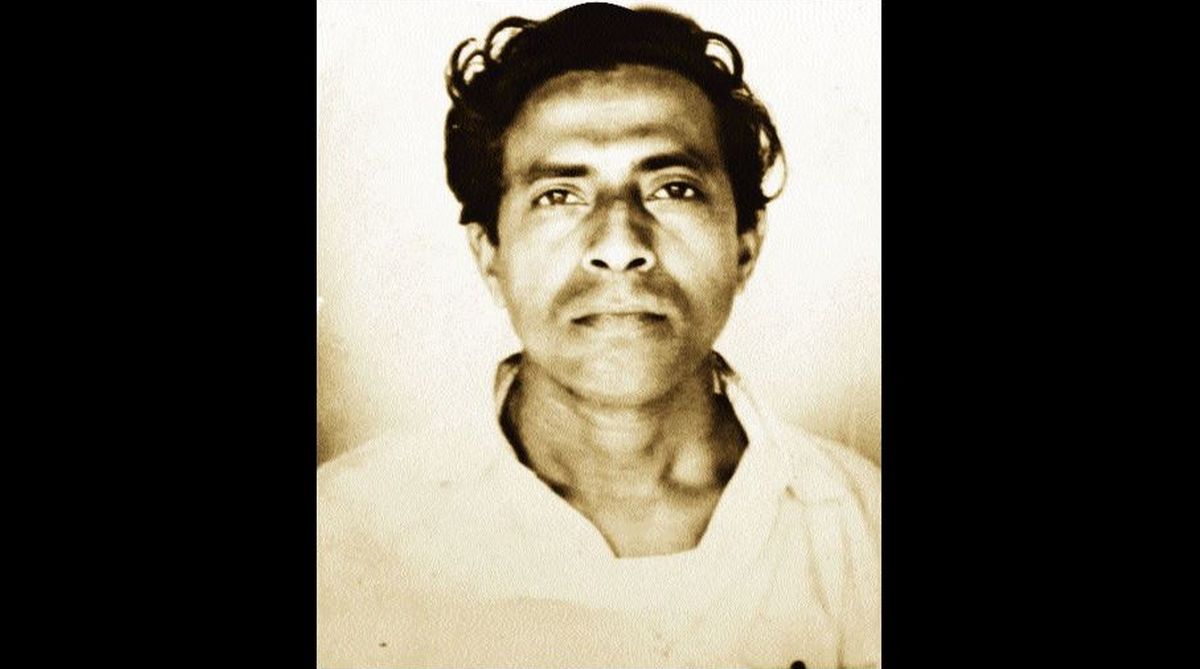Who was Saroj Dutta?
He wore many hats. He was a poet, journalist, an excellent translator, a revolutionary and iconoclast. He gave birth to a new kind of political journalism, always standing beside the tortured, marginalised, abused and oppressed.
In 1971, Dutta disappeared from the city of Calcutta. He was forced to disappear amidst widespread state repression on communist rebels. A secret killing that since became part of the urban folklore, a crime the state denies till date.
Advertisement
A communist poet, a secret state killing, an attempted revolution sparked in the village of Naxalbari at the Himalayan foothills. Setting out to tell the story of the slain revolutionary Saroj Dutta, the film titled Saroj Dutta and His Times gets drawn into a vortex of his tumultuous times, tracing turns and twists of the communist movement in India over three decades. A search by present-generation filmmakers, it uses personal and public historical archives and conversations with rebels of the Naxalbari rebellion.
Now, nearly five decades after he went missing in 1971, three young activists put their heads and pooled their money together to make this outstanding film on Dutta. These three youngsters, namely, Mitali Biswas, Kasturi Bose and Dwaipayan Banerjee decided to make a feature-length documentary not only on this great man but also, the political-historical context through which Dutta journeyed, influencing dozens of young activists of the time. It reaches beyond a biographical documentary, defining the history to which this man belonged. Biswas and Bose directed the film together while Banerjee was associate director and also wrote the script.
Bose says, “Though we were born into the post-Naxalbari generation, we grew up hearing histories and anecdotes about the period as children. As adults, all three of us have been seriously involved in radical left politics which goes back to the Naxalbari legacy, in our various capacities. We have read and felt the impact of the politics of Naxalbari through various angles, political, cultural and social, in our respective work as activists.”
Bose is a founder-member and film movement activist with the People’s Film Collective and co-editor of Pratirodher Cinema, a magazine on cinema and counterculture. Biswas is a social activist and worked as a freelance journalist. In 2015, she directed and produced a documentary film titled Naam Poribortito on the theme of sexual violence against women.
Bose says, “What intrigued us most was the complete absence of (non-fiction) moving images from this important period in our history. No documentation, no raw footage except a bit from Louis Malle’s Calcutta 1969 exists in the public domain from this period. This is a curious thing, as cameras were in full vogue during this period.
Secondly, the representation of Naxalbari in fiction films was aplenty — but it was overtly and almost completely centred on a romanticised depiction of the urban educated youth from prestigious colleges of Kolkata or New Delhi as if the Naxalbari movement was all about an urban adventurist movement!
These films did not even care to get into the rural roots of Naxalbari, the long-standing agrarian question and the peasants’ heroic rebellion which developed into a powerful political movement questioning the exploitative state and the society in radical ways. These films failed to depict how the Naxalbari movement made radical critiques of the pantheon of middle class icons, and talked about bringing to the fore subaltern icons, peasant icons and so on.”
But why choose Dutta over other Naxalite ideologues and icons? According to them, his life story reads like pages pulled out of a thriller, only, this was real life. His killing was spectacular in its brutality. It was part of an urban folklore, with a star like Uttam Kumar having witnessed it. Other than Charu Majumdar, he was the only top tier leader of the Naxalbari movement who was directly abducted and killed, and declared missing.
His killing was not the consequence of fiery public speeches or instigation to maim or kill. His only weapon was his razor-sharp, fearless pen that never stopped him from putting down on paper what he felt was wrong with the party he once proudly belonged to – the CPI which later became the CPI (M).
Here was a man who took bullets for wielding his only weapon — the pen! In that sense he is in the league of revolutionary poets/journalists like Victor Jara, Federico Garcia Lorca or Julius Fucík who were well-known public intellectuals assassinated for their communist political beliefs. So, Dutta’s story is an intriguing one to tell.
Through the life and times of Dutta, the film actually tries to tell a complex story of the long history of peasant struggles and urban uprising. So, in a way, it goes beyond a man’s story and becomes one of a historical period of which Dutta was a passionate chronicler. The film uses some of his immortal poetry and some of his translations of poets Chen Yi (My Address to Death in its Face), Patrice Lumumba (Dawn in the Heart of Africa) and Nikola Vatsarov (To the Hungry Children).
One imaginative aesthetic technique used is superimposing the yellowed pages of the newspapers in which Dutta wrote over the visual images of the person writing, the directors’ interaction with people close to Dutta, occasionally dotted with the voice-over narrating the unique story of a life that practically vanished from the face of the earth one day.
We learn that Dutta began with Amrita Bazar Patrika as a journalist and later quit. He then joined Parichay, a journal published by undivided CPI; Swadhinata, the mouthpiece of the undivided CPI before it split in 1964; Desh-Hitoishi, the mouthpiece of the CPI (M) till the Naxalbari uprising in 1967 and Deshabrati, mouthpiece of the CPI (ML).
He also contributed to Liberation, the English mouthpiece of the CPI (ML) and other Bengali journals like Arani and Agrani. “We wanted to keep the dialectics of the content in the form of the film. We also wanted to braid three narratives together — Dutta’s personal journey with his evolution and killing, the peasant uprising in Naxalbari, and the urban uprising of students and youth in Kolkata.
These narratives were stitched together and contextualised using excerpts from Dutta’s poetry and editorial writings (juxtaposed on the enacted shots), songs that organically evolved from the peasants of Tebhaga, Telengana and Naxalbari movements, and archival footage of newspapers and newsreels of world events (from China, Vietnam, Congo, France) which had deep influences and resonances in the Naxalbari movement unfurling in India,” says Bose.
The songs used in the music track are also chosen with designed intent as markers of immortalised songs that sparked the Naxalbari movement and gave it a push and a boost. Alongside songs composed by cultural activists such as Ajit Pandey, Dilip Bagchi, Pratul Mukhopadhyay, Subbarao Panigrahi and others, one can also get to hear the songs written and composed by the peasant activists.
Some of them, like comrade Shirril Oraon, are living oral archives of those songs. He was semi-paralysed while they were shooting him but he sang songs in Bengali, Hindi, Nepali, Sadri and Jharkhandi. The songs of Rongili Biswas that were used in Utpal Dutt’s play Teer on the Naxalbari uprising has also been used written by Sukra Oraon and Kalu Singh. “We chose these brilliantly political and indigenous songs alongside a couple of known songs to enrich the politics of iconoclasm and reclaiming people’s icons which is a motif that keeps recurring throughout the film,” says Bose.
The directors have also created a strategic sound design that would cross national borders and assume an international significance such as sounds from Peking Radio which Indians would eagerly listen to during the hey day of the Naxalbari movement. The directors have juxtaposed the soundscape on to the archival footage of old newspapers and newsreels.
Every single frame, every sequence, interview, images of Bengali newspapers for which Dutta used his pen to instill the fire to rise against injustice and brutal violation of human rights gives the film its rich form in harmony with the content. Old photographs of the family and Dutta at different stages of his life dot the space.
Dutta’s wife Bela, in her 80s, narrates how as an active member of the Communist Party, she was ordered to go to the villages and work within the agrarian movement immediately after she married Dutta. “I learnt to make bombs with my hands, throw them and also knew how to use guns.
The farmers were angry. But the party leadership asked us one day to come back and ‘go to the kitchens’,” she said. She adds that it was her husband who pushed her to go to the villages and work there though they were newly married. She was an active party member before Saroj became one.
The political ideology the film is based on does not really matter to those who believe in it, or those who do not, or even those who are completely apolitical because the film invites you to watch it as a film per se first and then step into the dramatic narrative picked out of real life. The two young directors also appear in the film, watching old clips, editing the film, looking at scanned pages of old newspapers which gives the film a feel of the real.











